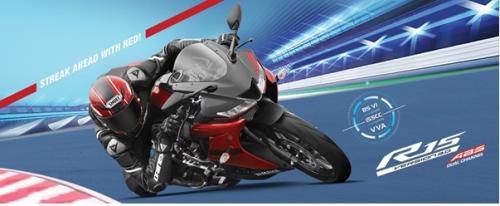Different types of tyres that you can use in your motorcycle

In
comparison to say, a decade or two ago, the bike market has risen
significantly. The days of thin Hondas and hefty Pulsars on the streets are
long gone. We now have a far wider range of motorcycles on the roads, ranging
from resurgent Royal Enfields to KTM Dukes and Yamaha R15.
Different types of bike tyres are required for each of these bikes. In this
article, we'll look at the many motorcycle tyre alternatives available to
Indian riders.
Tyres
for Street Sport Bikes: These are usually bikes that cost more than a lakh
rupees. Because these bikes require more cornering performance than a street
bike, the tyres are made with softer rubber and have significantly lower
sidewalls than street bikes. On both wet and dry ground, the increased riding
speed ensures superior grip. In this case, the tread quality is crucial in
keeping the bike steady and linked to the road.
Tyres
for Mountain Bikes: These are the highest-performance street tyres available,
designed for maximum performance. These tyres have the softest compounds, which
provide the most grip and temperature stability. Sports motorcycles have more
powerful motors, which means higher braking efficiency, and these tyres help
with braking by improving traction on the road. While these tyres provide
excellent traction on dry ground, they are prone to slipping on wet surfaces
due to their high torque and lack of tread.
ATV
(all-terrain vehicle) Tyres: For traction on gravel trails and dirt roads,
these tyres are blocky. On typical roads, the grip is also adequate, but the
hardness of these tyres might make riding uncomfortable over long distances or
in everyday situations. These tyres are typically found on bikes marketed as
off-road or adventure.
Tyres
for Off-Road Bikes: Off-road tyres are made from the toughest rubber
compositions for bike tyres and are designed for true off-roading aficionados.
On tarmac, these tyres will roll, but don't anticipate much grip or comfort.
Furthermore, even with the tougher rubber, these tyres wear down quickly on
conventional roads because their tread is not designed for street use.
Radial
Tyres: Steel belts in radial tyres run at a 90-degree angle to the tread line.
It permits the tyre's sidewall and treads to work separately. As a result,
there is less sidewall flex and more ground contact. R15 V3
uses this type of tyre.
Bias
Ply Tyres: The nylon belts of bias-ply tyres run at a 30 to 45-degree angle to
the tread line. The sidewall and tread are connected by several, overlapping
rubber plies in these tyres. Because of the strong internal architecture, there
is less touch with the ground, which could lead to overheating.
Post Your Ad Here
Comments